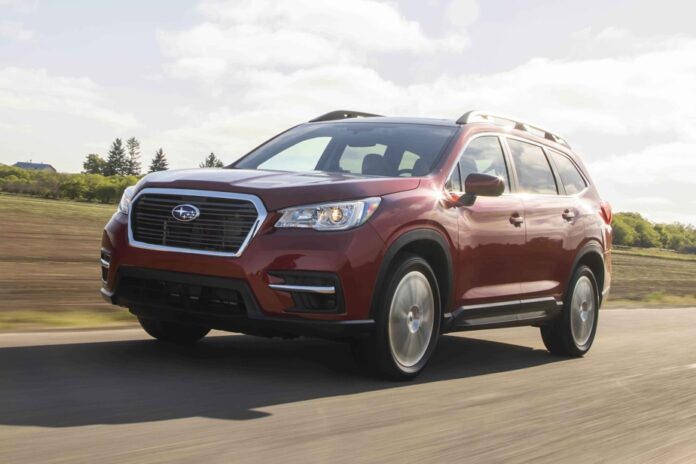Q: The lease on my 2021 Subaru Ascent ends in winter 2024. I’m wondering if I should buy the vehicle back ($23,000) or if I should return it to purchase or lease another vehicle. The lease purchase interest rates are very high (9.99%) and I’m also wondering about going hybrid or electric for a seven-seater vehicle. However, the choice is quite slim in this niche. I have five children ages 7 to 14 and don’t need a vehicle with towing capacity. – Nicholas B.
A: You do not indicate the mileage of your vehicle or whether it still meets your expectations, apart from of course its interior volume (seven seats). The interest rate is indeed higher, but that comes from the dealership, right? You should also ask about the rates offered by your financial institution. Once taxes and interest charges (9.99%) are paid, it will cost you at least $10,000 more to acquire your rental. Over a 48-month term, that’s payments of $670 per month. If you opt for a brand new, fully guaranteed Ascent (Commodity), your monthly payments for the same period will be $768.65 (current interest rate of 7.49%). As long as you resist the temptation to treat yourself to a more luxurious and more expensive version. Therefore, the temptation is great to hand over the keys and get a new vehicle. As for the choice of a seven-seater hybrid or electric vehicle, the choice is indeed rather slim. You could consider the Toyota Highlander Hybrid or the Sienna (a minivan, ideal for your needs).
Q: I own a 2008 Honda Fit (yes, it’s 15 years old!) that I still really like. Because I was lucky enough to stay close to work until I retired, it only has 63,000 kilometers on the odometer. I don’t do much more mileage and never long distances. But I live in the countryside and I need a car for groceries, etc. I have always maintained it well, however I notice that it is getting old. The film that tints the windows is starting to wrinkle, I have water in the spare wheel compartment and my mechanic informed me that the exhaust system will soon need to be changed. The brakes and battery were changed last year. She’s never had a problem, but I’m starting to have a little less confidence when driving her, given her age. I would have liked to keep it for another two or three years while counting on my cell phone in case of problems, if that happens. Considering the very attractive subsidies from both levels of government for the purchase of an electric vehicle, I wonder if I should buy a Chevrolet Bolt now. Will grants still be offered in two or three years? But there you go, I already had two Chevrolet Sprints a long time ago, and after four years and 100,000 km on the odometer, you could tell they were at the end of their tether. My question is this: Since I prefer to keep my cars for a very long time, will the Bolt have good reliability to last at least 10 years? Buying a used one isn’t really in my options, I worry about buying someone else’s problems. – M.-P. L.
A: Don’t we all get a little older every day? At the risk of surprising you, we suggest you keep your vehicle for another two or three years. The exhaust system, window film and water in the spare wheel compartment (probably a seal) are not very expensive repairs. This car still has it in its belly, as long as you care about its maintenance. Given your usage (63,000 km in 15 years), why turn to an electric car now? For grants? In its 2022-2023 budget, the Quebec government mentions that the Roulez vert program will be extended until March 2027. However, nothing indicates whether the amounts granted today will still be the same.
Q: I just purchased a Hyundai Kona EV. I was told at the time of purchase not to charge the battery above 80% to prolong the battery life. Does that mean I can’t charge it more than 80%? – Guy L.
A: Your representative is right to warn you about this. And that goes for the Kona and every other electric vehicle on the market. That said, you can, however, during a long walk, charge the battery to 100%. On this subject, let us point out that the last percent are generally the most difficult to recover. The important thing is not to “fill up” repeatedly, as this damages the battery cells. A warning that also applies to fast charging stations. Do not abuse. Final tip: make sure you keep your vehicle’s charge level between 20% and 80%.















